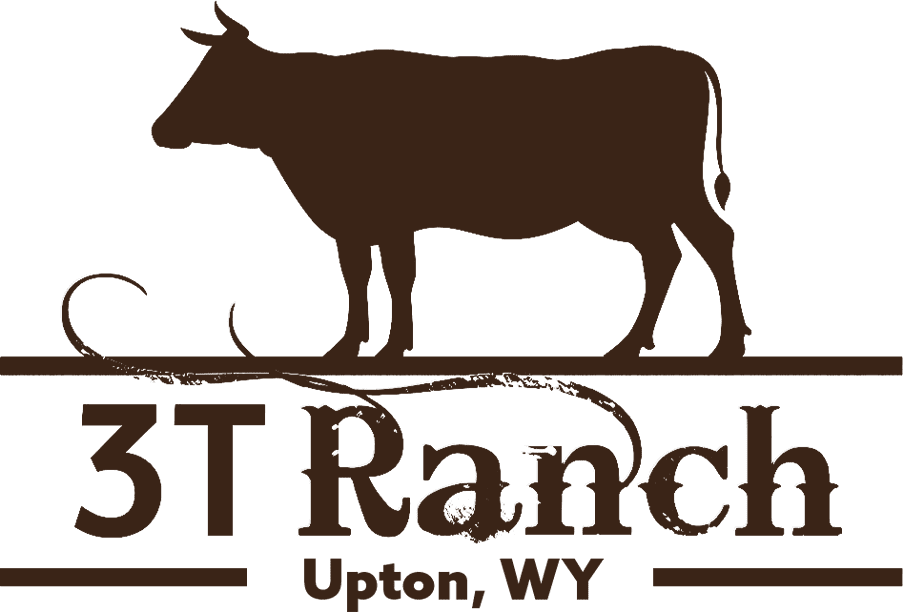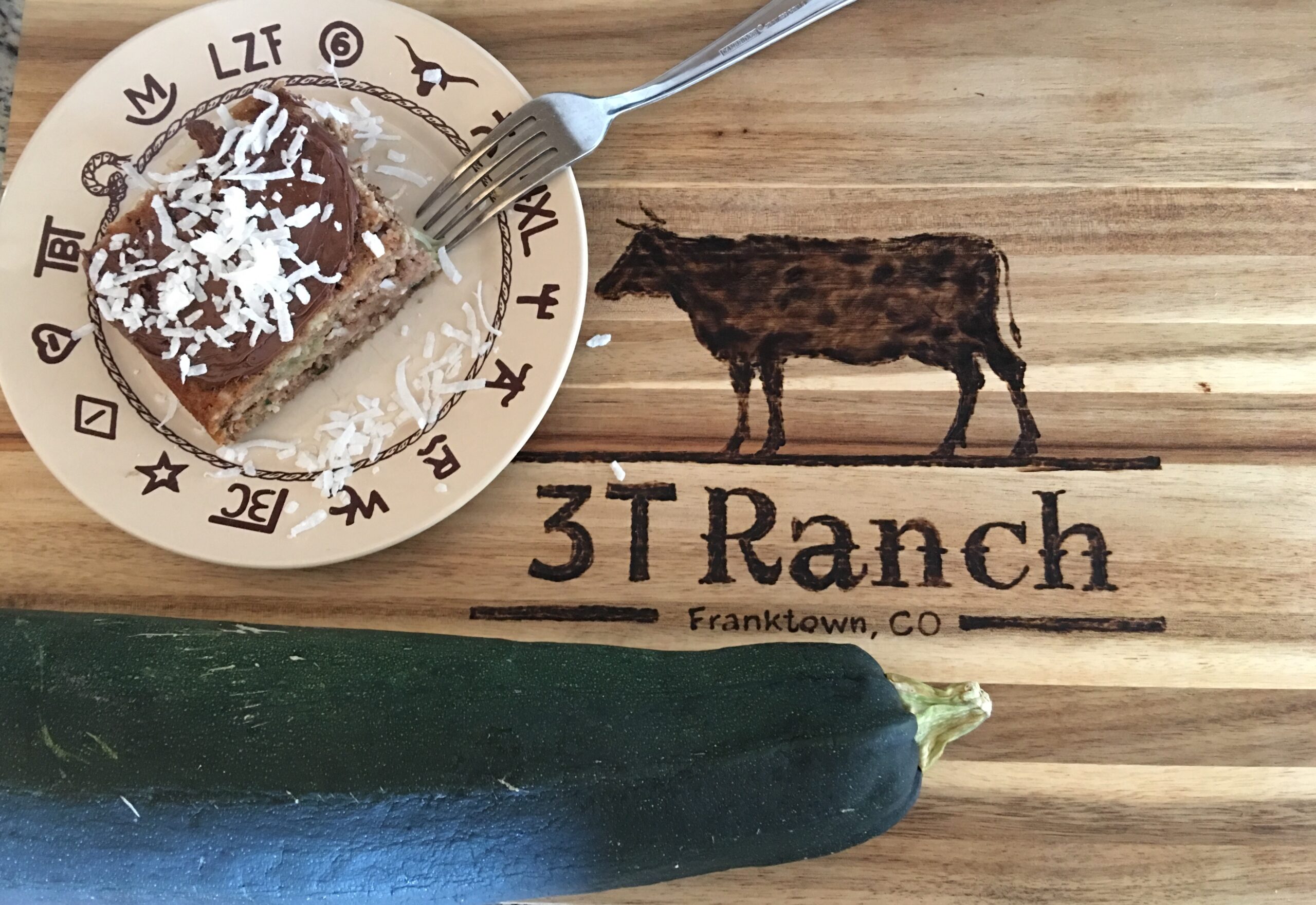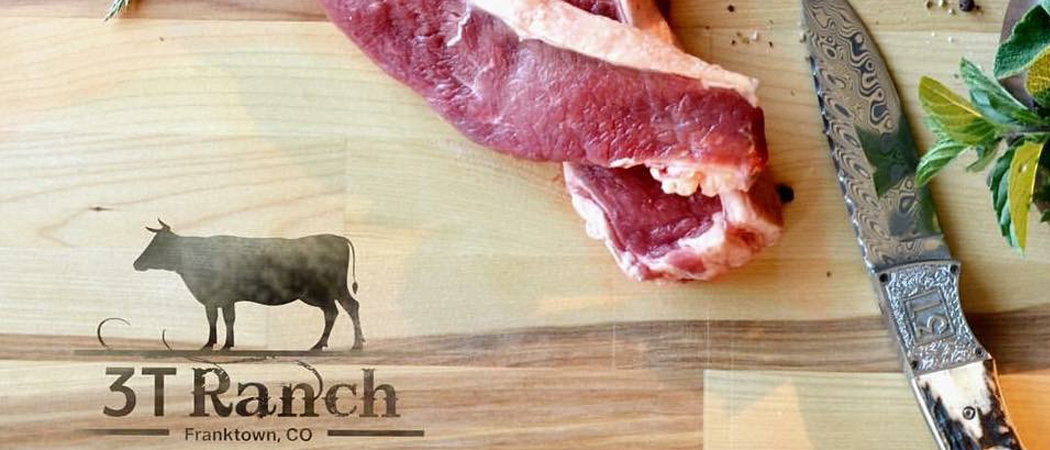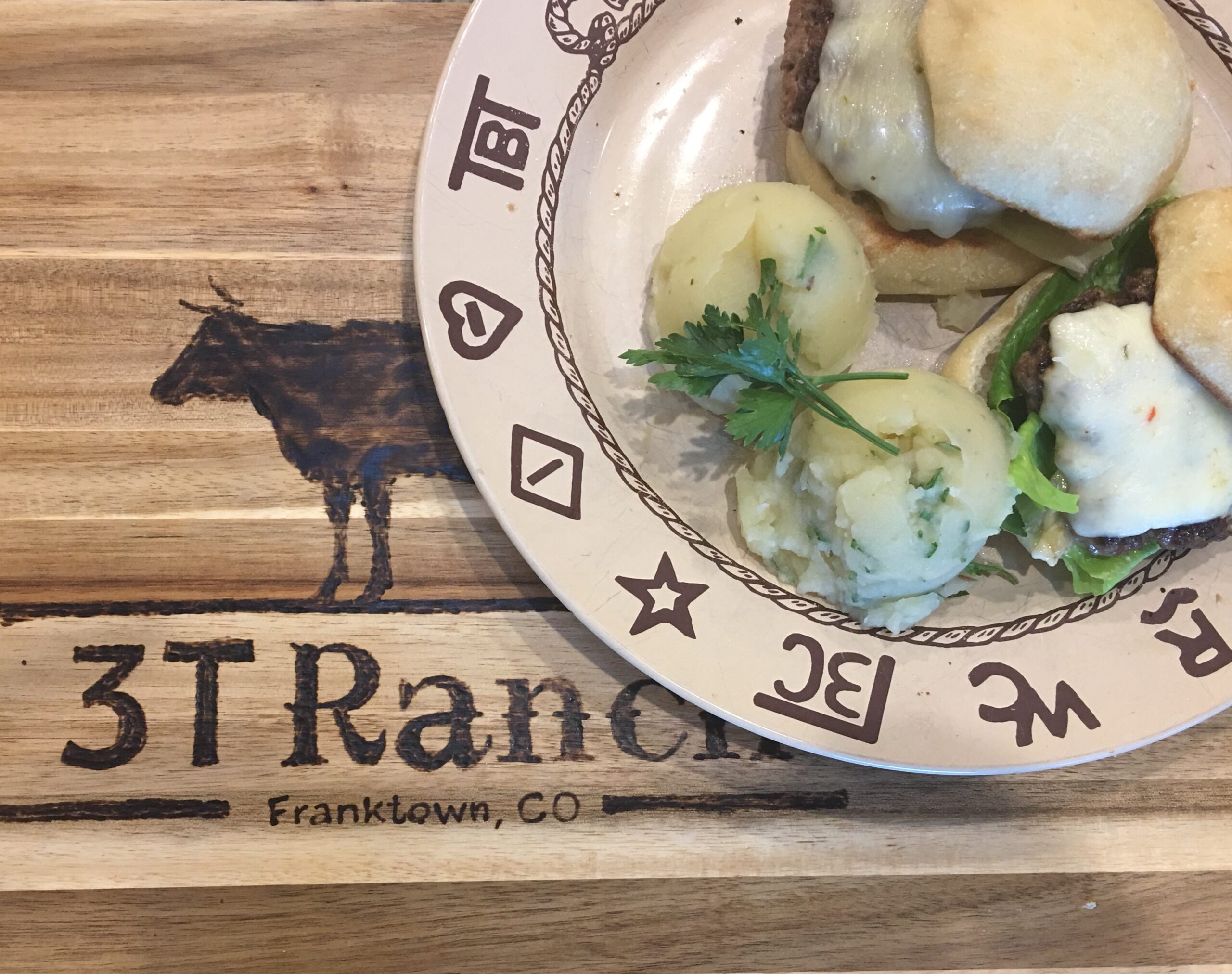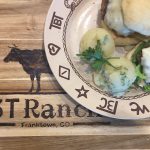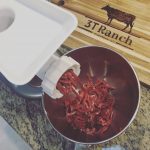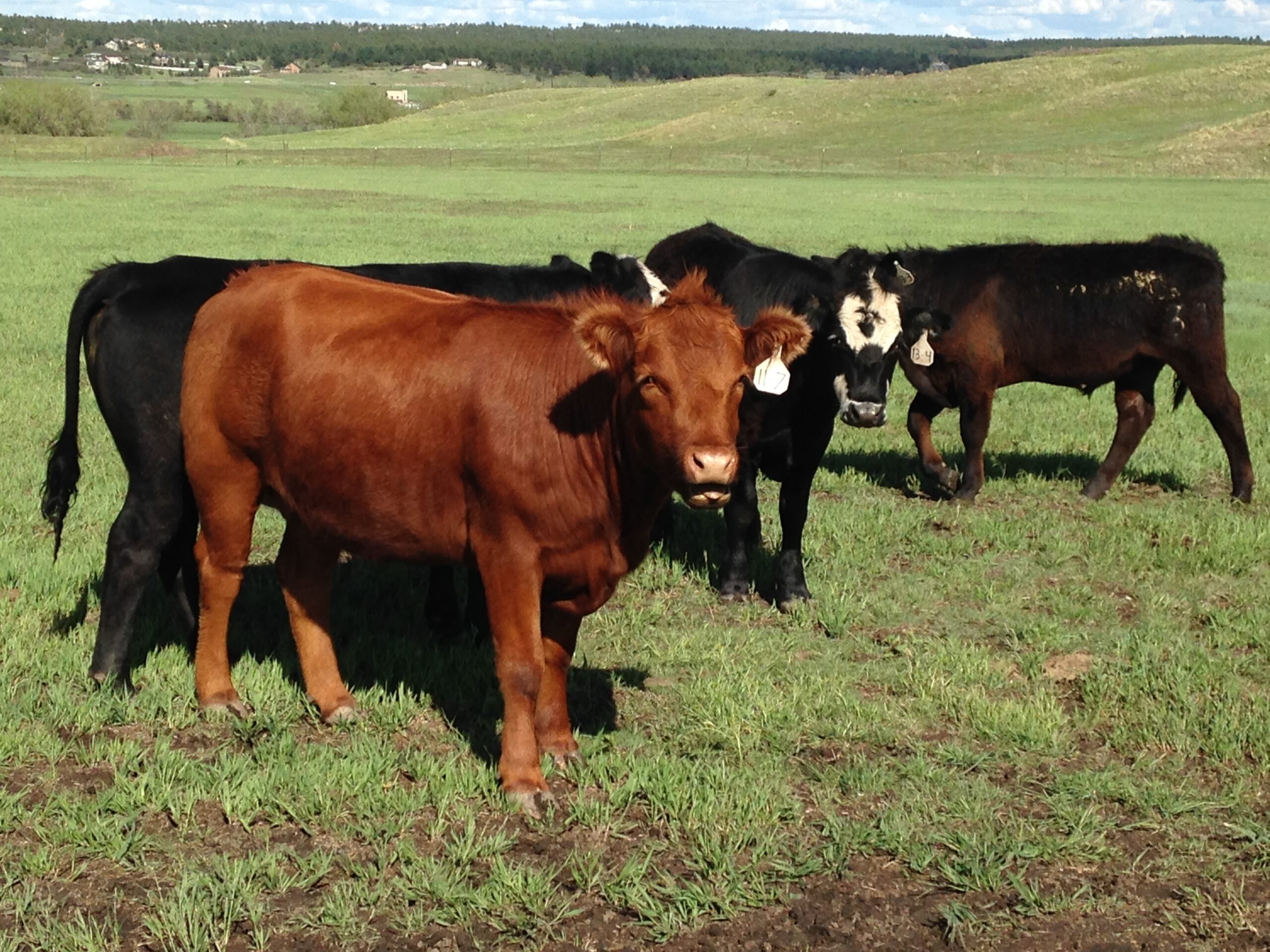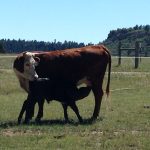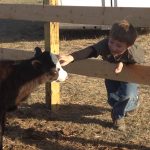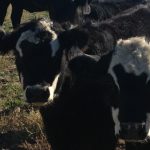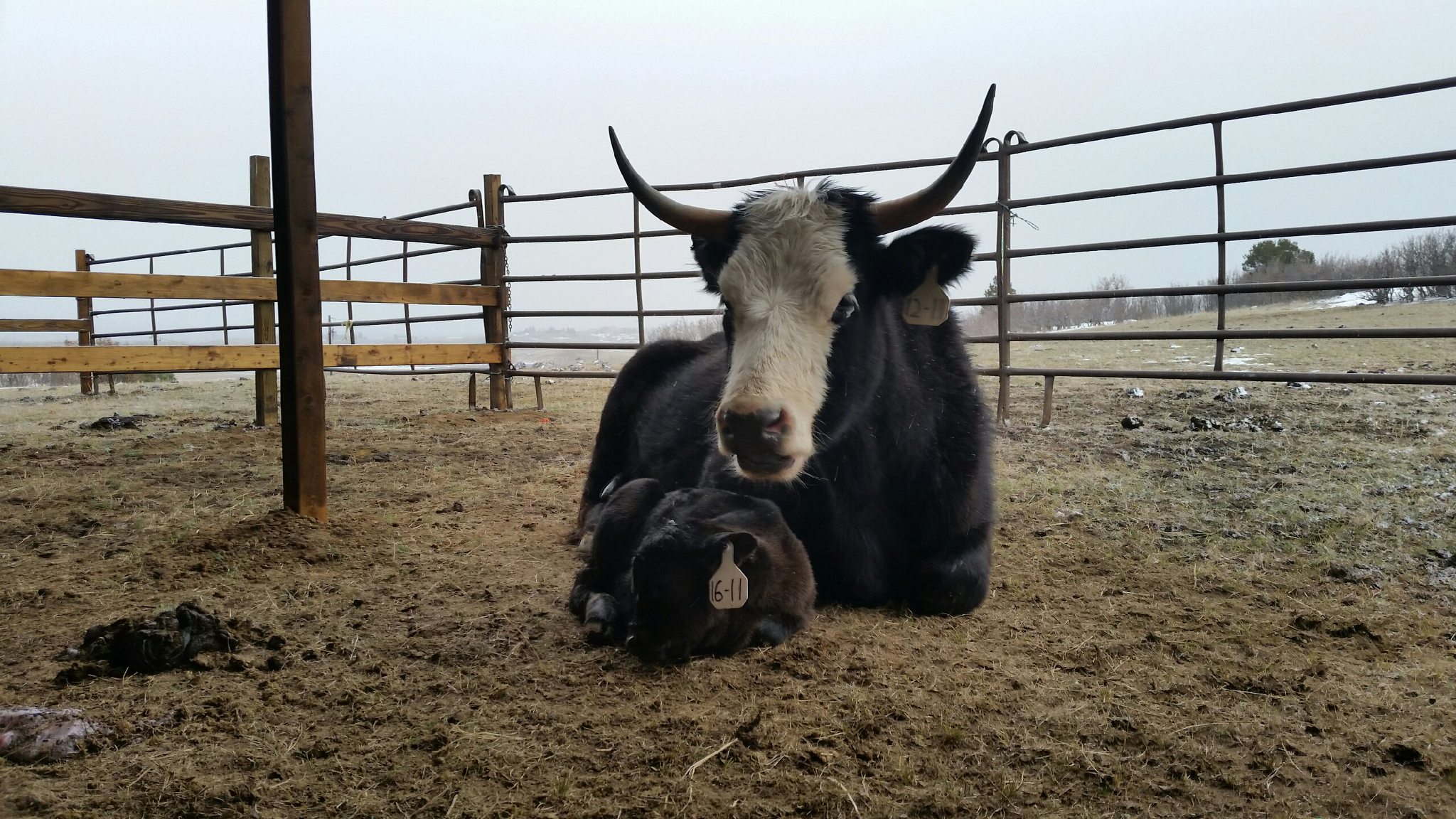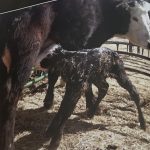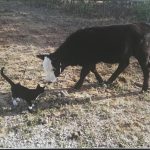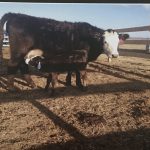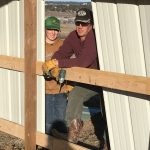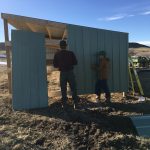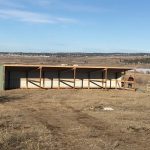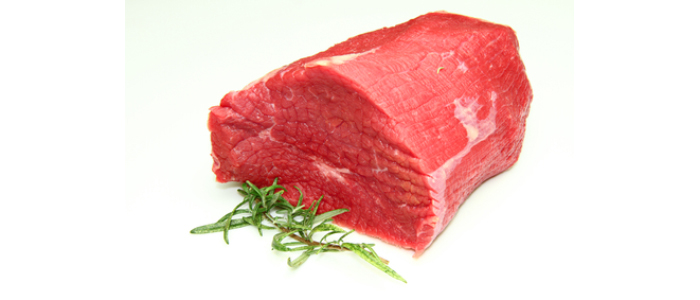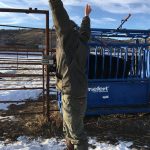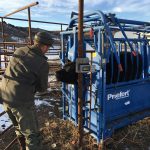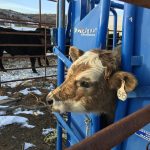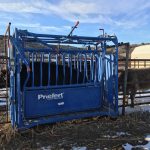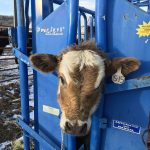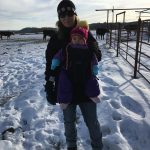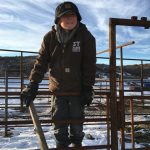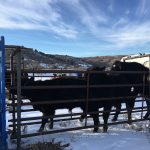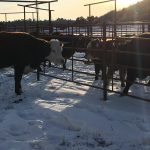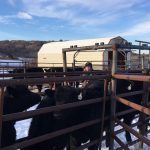3T Ranch Summer Berry Cake

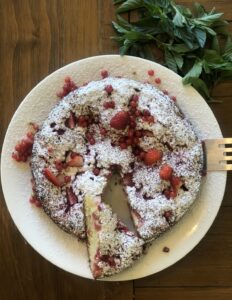
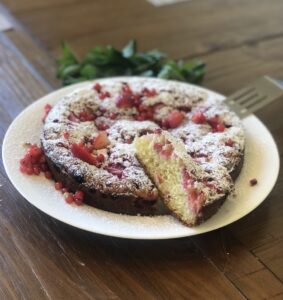
Have you tried red currant berries before? It is native across Europe and great for jams and light summer cakes. My grandparents had many red currant bushes in their garden and I remember picking them as a little child. My grandma or as we called her "babi" baked many of these wonderful light cakes - "bublanina". You can use any fresh fruit you have, it always turns out airy and tasty.
Saturday afternoons at my grandparents' house were always reserved for visits from the neighbors and you could count on that this cake would be served along with hot coffee, yes.. even in the summer time. So, as I'm sitting here on Saturday afternoon, typing up this recipe and enjoying my own version of her cake, it sure brings many wonderful memories of my grandparents.
I have ordered the red currant shrub for my garden a few years ago and the very next year it was producing fruit. The berries are known as super fruits as they have naturally high antioxidant capacity and they also have a good supply of vitamin C and K, manganese and potassium.
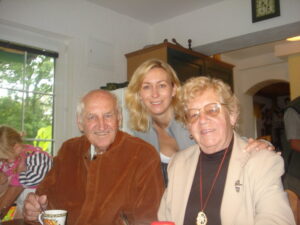
Ingredients:
- 1/4 grassfed unsalted butter
- 1/2 cup plus 1 tbl granulated sugar
- 1 farm fresh egg
- 1 teaspoon vanilla extract
- 1 cup flour
- 1/2 teaspoon baking soda
- 1/2 teaspoon baking powder
- 1/4 teaspoon salt
- 1/2 cup milk
- 1/2 tablespoon apple cider vinegar
- 2 cups of fresh or frozen berries of your choice (I have used strawberries and red currants from my garden)
Instructions:
- Preheat oven to 400 degrees.
- Grease and line with parchment paper 9-inch round cake pan.
- Mix milk and apple cider vinegar and let it sit.
- Beat together butter and 1/2 cup of sugar for 2 minutes.
- Beat in egg and vanilla.
- In a separate bowl, sift together flour, baking powder, baking soda and sat and add to the bowl with butter and sugar. Gently stir a couple of times.
- Gradually pour in the milk and vinegar mixture that just turned into buttermilk, stir until incorporated, don't over mix.
- Spread batter evenly into the pan.
- Evenly arrange fruit over the top of the batter.
- Sprinkle 1 tablespoon of sugar.
- Bake 25 minutes. Remove from oven and let it stand 10 minutes before serving.
- Sprinkle with powdered sugar and some leftover fresh fruit.
3T Zucchini Chocolate Coconut Cake
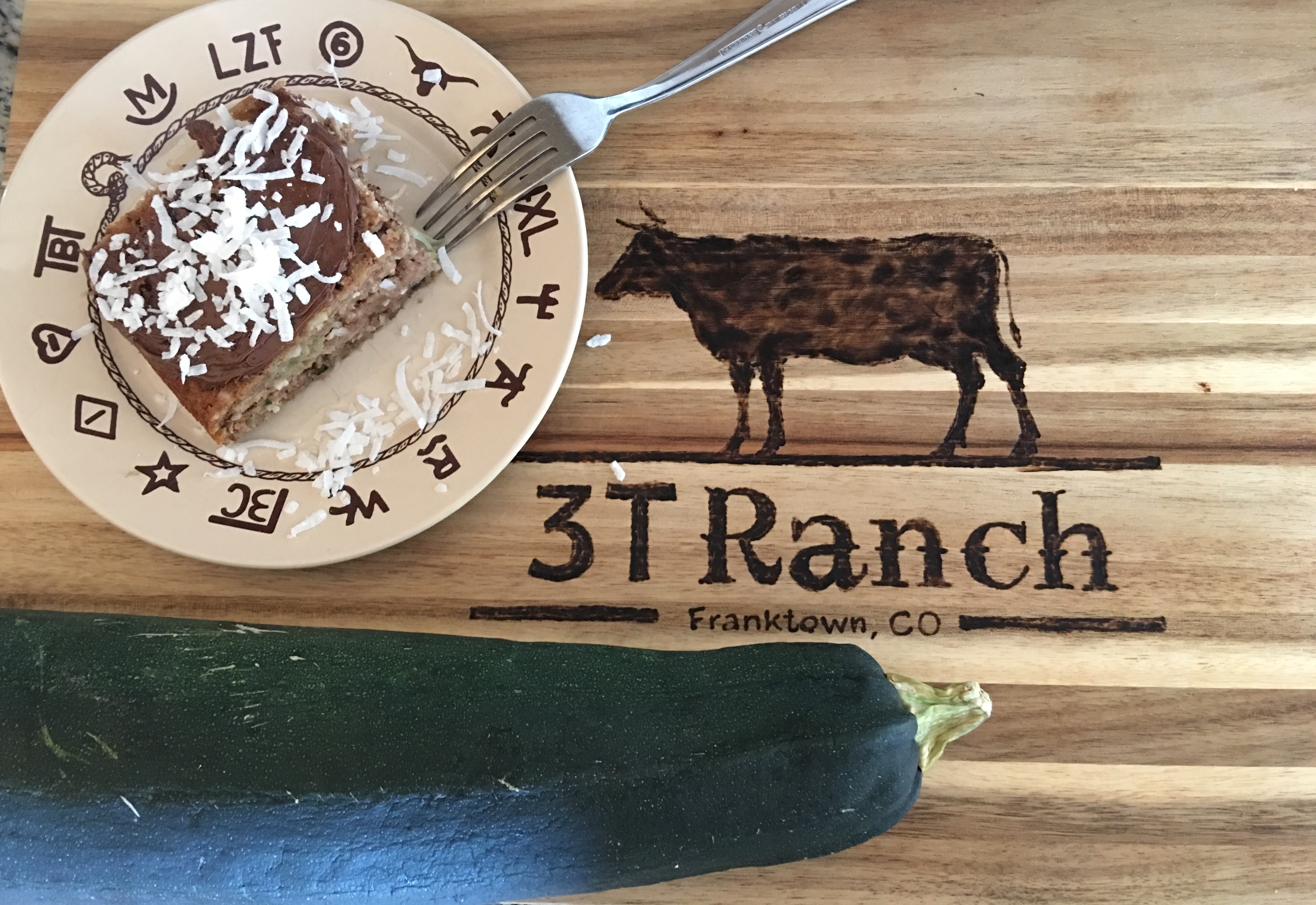
Well, we got our first snow this week and my garden is officially done for the season. The past weekend, I have tried to harvest as much as I could before the snow storm. I will have to remind the Cowboss to "remind me" next spring that I shouldn't plant that many zucchini plants. It was a little too much, but our chickens sure liked the leftover squash.
The cowboys were hunting pronghorn this past weekend and the little guys and I "manned" the ranch. So, we have picked our zucchinis, carrots, beets, tomatoes, peppers and somehow we still had strawberries?! That was a first one for sure.
As I had plenty of time on my hands at night, I decided to shred, freeze and can everything I could. Zucchini processing was one of them. I have packed two cups of shredded squash into freezer safe ziplock bags for baking. Pre-measured and ready to go.

My sister was "manning" her own household and yet again we ended up talking about food and cooking. She baked this zucchini cake while her kiddos finally went down for the night. It is an old family recipe that our grandma used to make. Easy and tasty and versatile. You can use shredded apples instead of the zucchini. Grandma aka babi was so good with using up all of the produce from her garden. I sure do miss her. Actually, I so miss both of them. Best grandparents and great-grandparents.

Ingredients:
- 2 cups all purpose flour
- 1 cup sugar
- 1 cup milk
- 1 cup shredded coconut
- 1/2 cup canola oil
- 1 tablespoon cocoa powder
- 2 eggs
- 1 & 1/2 teaspoons baking powder
- 2 cups of shredded zucchini or apples
- jam, Nuttela or melted chocolate for the top of the cake
Directions:
- Spray 13x9 pan with canola, so you can get the cake out of the pan.
- Mix all ingredients really well. You don't even need a mixer!
- Pre-heat oven to 400 degrees and bake for 40 minutes.
- Let it cool for 20 minutes and your cake should come out as "piece of cake"!
- You can spread your favorite jam or Nuttela or melted chocolate over the top. Grandma even did powdered sugar and milk glaze. All are wonderful!
- The kids like it and it is even better with a friend that just showed up for an afternoon coffee or tea.
P.S Here is the cake my sister baked. She is today 32! Funny girl she is!
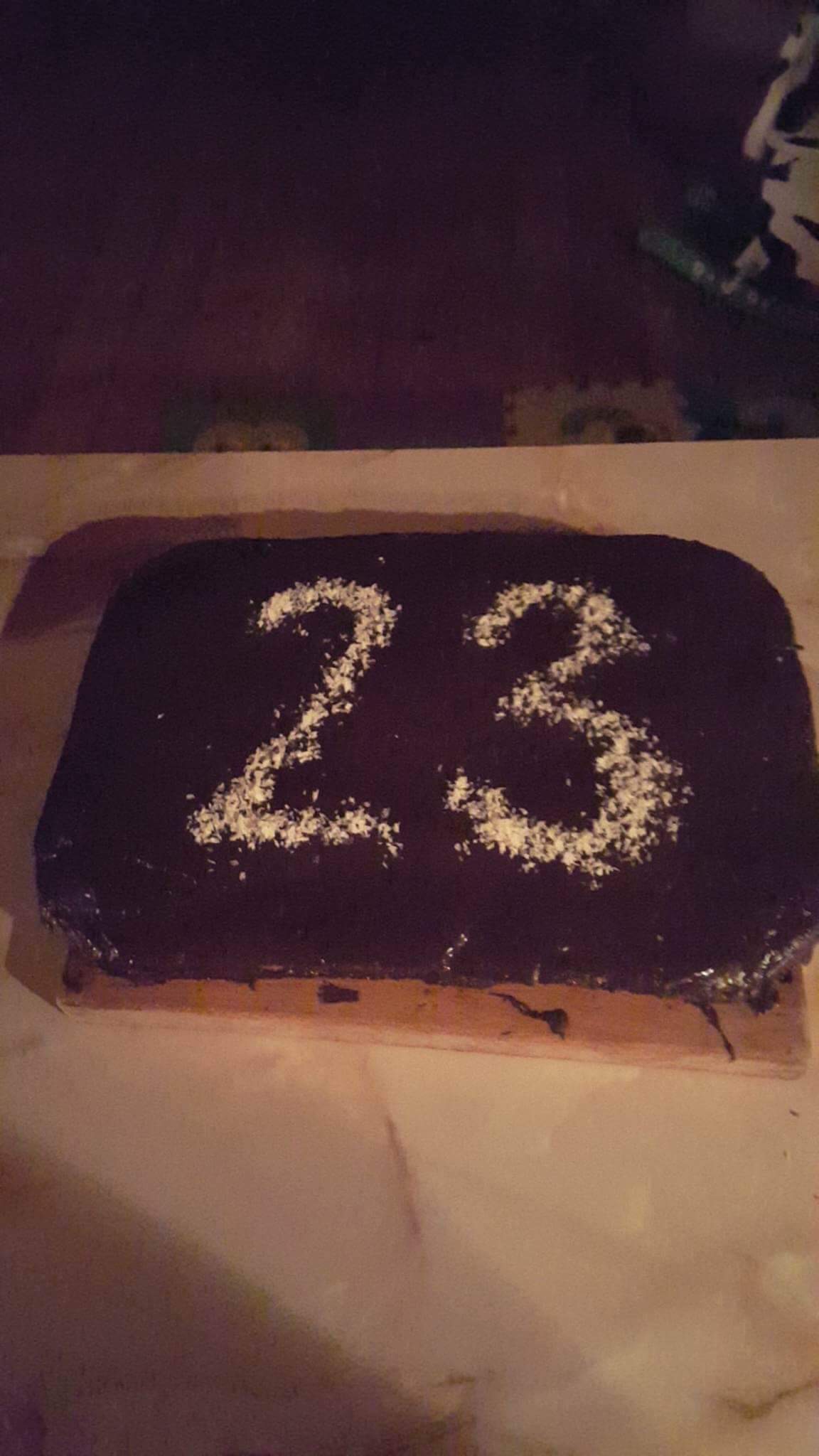
What is the difference between "live", "hanging" and "freezer" weight?
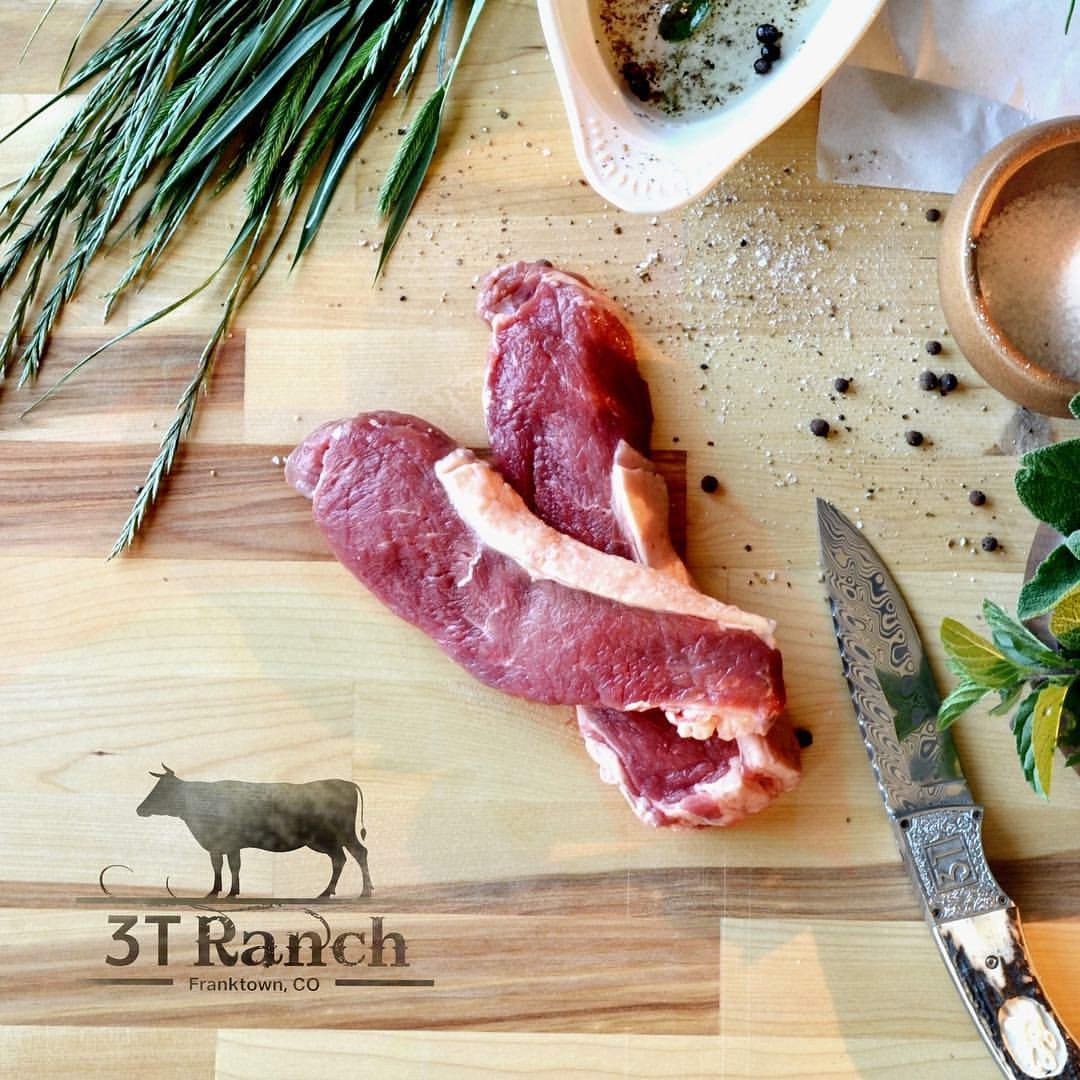
We have been recently asked what is the difference between "live", "hanging" and "freezer" beef weights? 3T Ranch sells beef with our prices based on freezer weight. Why, do you ask? Here is some information to consider when ordering beef.
When it comes to beef weights, there are 3 different ones of which customers should be aware. The first is “live” weight. This is what the animal weighs on the hoof alive. The live weight of our steers usually averages around 1,000 lbs.
The next weight is “hanging” weight. This is the weight that the butcher charges their processing fee on and is based on a “dressed” animal. Dressed simply means the hide and all organs have been removed but all of the bones and other unusable parts are still included; and this gives the hanging weight of the animal. The hanging weight is usually about 60% of the live weight. So, a 1,000 lb animal would have a hanging weight of approxiamtely 600 lbs.
The last weight is the “final” or “take-home” or "freezer" weight. This is the weight of the actual beef that each customer will bring home and gets to put in the freezer and then on the BBQ. It is only the packaged steaks, roasts, and ground beef. This weight is usually about 40% of the live weight, or 67% of the hanging weight. So for our 1,000lb live steer that had a 600lb hanging weight, it would have a 400lb “freezer” or “take home” weight. The difference between hanging weight and freezer weight is two parts: water weight lost during the 10-14 day period that the beef is aged, the rest comes from the bones and unusable parts that are cut out during the processing and packaging.
We choose to sell our beef as "freezer" weight. This provides the customer with a total price that doesn't change as well as the customer knows how much beef they actually get in the freezer. For a ¼ share, you get 100lbs of beef for $710, which is $7.10 per finished pound, the order is consistent every time. This allows the customer to plan ahead and there are no surprises. All fees from the processor are already included in the total price.
Many ranches sell beef by "hanging" weight, in this method the customer is given an approximate total sales price and an approximate amount of beef (lb.) in the freezer. Each animal weighs a different amount and therefore the ranch or the processor can only estimate how much beef there will be after the processing, the “freezer weight”. The hanging weight includes all of the bones and extras before processing, it is not what you get to take home in the freezer. Each animal has a different yield (the ratio of freezer weight to hanging weight) so you’re not sure what the end price will be and how much you will get out of it. It is the easiest way for the ranchers and processors to charge, but we feel like it is not the most transparent method for the customer. Why not just charge for what you get to take home, so the price and quantity are known up front? It’s more like buying beef at the store, the price is marked on a given cut that has a given weight; you don’t have to guess how much the whole animal weighed at one time or what it’s yield was. Given our example above of the 1,000lb steer, our 100lb “freezer” weight ¼ share is $7.10 per pound. For comparison sakes that would be the same as a 150lb hanging weight ¼ share at $4.73 per pound (4.73 x 150lbs = $710 and would yield 100lbs). A quarter of beef at $4.73 per pound hanging weight is the same as $7.10 per pound freezer weight. Some also sell based on hanging weight plus processing. The cost of processing would then be added into the hanging weight cost for the final amount at pickup. Processing is usually about 70 to 80 cents per pound extra. Our pricing is always the final price, inclusive of all processing and packaging costs.
We know it gets confusing trying to compare the different pricing methods our there, so we try to make it as straight forward as possible, your order will be the stated weight for the stated price. Even though our beef packages are based "freezer" weight we have added pricing on our website 3T Ranch Beef Price List that shows prices for both methods "freezer" and "hanging" weights.
Hopefully this information is helpful, but as always, please drop us a line if you have questions! [email protected]
Crisis turned into one heck of a tasty dinner! 1)good story, 2)tasty recipe 3)defrosting and cooking tips!
We are counting down the days for our next round of beef sales. Customers come first "they say" and it is true at the 3T Ranch. Beef orders from our customers are fulfilled first and the 3T crew's beef package is typically last one in the freezer. I opened the freezer today and realized we were out of ground beef. I'm a big "week ahead meal planner" and cheeseburgers were on the menu. Hmm.. let's try quickly to come up with plan B while the two small kids are still napping.
Let me tell you, it is hard to cook holding "two babies". That is our daughter's favorite saying these days after she wakes up from her nap. "Mommy, two babies", which means she wants to be picked up and snuggled along side our littlest cowboy. I love that time with our kiddos, they are both still waking up from their naps and want some snuggles, but it doesn't last long before they turned into little tornadoes. I needed to seize the situation!
I guess one good thing about running low on beef is that you don't have to dig through your freezer to see what cuts you have. (Will talk freezer organization soon, I promise)! Roast can be grinned up into ground beef. I have found my winner, chuck roast it is! You would be surprised, but it really doesn't take long to defrost the beef. 1) unwrap the meat from the butcher's plastic and paper 2) put it into a ziplock bag and squeeze out the air 3)put it into a sink filled with cold water. 4) flip the roast in the water every 20 minutes. My beef was defrosted in less than an hour.
I love love my KitchenAid, I use it every day. I use it so much that my Cowboss bought me a new one to replace my "rusty old mixer". I had the chuck roast grind up in now time without any mess or extra trips to the grocery stores.
Tips for tasty cheeseburgers: 1 pound of 3T ground beef, 1 teaspoon of salt, 1/2 teaspoon of black pepper and 1 tablespoon of dijon mustard. The mustard really makes it!
Healthy version of mashed potatoes: Your choice of potatoes, 2 teaspoons of Lowry's seasoning salt, 1 teaspoon of garlic and pepper seasoning and 1/2 tablespoon of caraway seeds. Trust me, it just works with the potatoes. Make sure to include all of the seasonings while you are boiling the potatoes. When the taters are done, save about 1/2 cup of the liquid. I have used my KitchenAid to whip the potatoes and slowly included the 1/2 of the liquid. The potatoes don't need any milk or butter. No extra calories and you are not scarifying the taste.
I hope you will try the recipe as well as our beef!
3T Ranch Reaches 100 Cows!
The 3T Ranch has reached a huge milestone this week. Our 100th cow was born during a sunny morning earlier this week. We have had a decent amount of rain and hail, yet this little creature waited for the sun to shine through and then arrive. Mama aka "Milk Mustache" (she is all black except her white mustache) and the baby are doing just fine and have already re-joined the herd.
The Cowboss and I have started 3T Ranch about five and half years ago with 10 cows and always dreamed of having 100. Sometime people take the words "hard work pays off" for granted, but it has sure worked for us. I can't tell you how many times the boys had to feed the cows in a snowstorm with their ski goggles on, so they can see at least a couple inches in front of them or when the Cowboss spent hours with first-time mama to help her through the delivery or when they had to fix fence in the beaming sun.. Yet, we wouldn't have it any other way, our work is so rewarding.
We would like to say a HUGE Thank You to all of our customers who support us, watch us grow and appreciate all the work that goes into our style of ranching.
Do You Name Your Cows?

"Do You Name Your Cows?" Is sure a question that we get more often than you would think. Well, the answer is sort of.. There is a reason behind our "naming" or "numbering" process.
We just had a little "doggie" this morning, the mama and the calf were sure thankful that the cowboys built plenty of shelter for them. You can easily lose a calf in this weather. The cowboss checks on the ladies a lot during this type of weather. Anyways, if you have a closer look at the picture, you will see that the calf has a tag that shows 16/11. 16 is for the year she was born and the 11 is after her mama. (Yes, it is a little heifer aka girl). Her mama's number is 12/11. 12 is for the year she was born and 11 is her cow number. Meaning she was our 11th cow on this outfit. Little 16/11 will get a new cow number when she is about a year old. We number all new calves after their mama, so we know who belongs to who when we transport them to their summer pastures. Nobody wants to end up with the wrong mama. It also helps us to collect valuable information on the mamas and have a track record of their previous calves and how they have performed. It is important to know, when the mama cow typically delivers, does she struggle with delivery and may need help, does she have big or small calves and keep track of the lineage.
12/11 was our first calf that was born on 3T Ranch. The cowboss helped during the delivery as her mama ran out of steam at the end. He was sure happy to see that mama and our first calf were just fine. You can tell from the pictures that we did get attached to her and closely followed her first year and even know, she has a special place on our ranch.
We do name our bulls, they have numbers too, as they do the "hard" work around here. We have Phill and Bob. Bob's number is 12/00. The cowboss got creative with the double 00..
When the Cowboys are "Nesting"
We are finally in the last stretch of time before our cows start having calves. We have about a month to go. Before long, we will have little "doggies" as we call our newest cattle additions, running all over the place. I thought that puppies are the cutest and most playful animals, until I saw our calves playing with each other and racing around with their tails way up high. The most spectacular sight is to see them being born and getting hang of walking and milking within just few minutes. We eagerly wait for the mama and baby to create their new bond and figure out this milking ordeal. Let me tell you, I have lost so many nails, watching them struggle, desperately wanting to help the calf to find the utter, yet the best thing is to let them figure it out. We have been lucky so far, all of our cows are good mamas and claim their babies. We don't take any chances though and have calf formula ready, just in case we need to use it.
The last month is hard for the cows and for the cowboys. As any expectant mother can relate, the last month is the longest and must have at least extra 10 days packed on! The nesting period begins for all soon to be moms to make sure all is ready for the wonderful arrival. My cowboys are also "nesting" the month before our first arrival. They want to be ready and give the calves the best chance to survive. This year, the cowboys built new shelters for our cows as April can be temperamental with weather. We intentionally don't "calf" in the middle of the winter. We wait until the cows have some nice green grass and the calf is born into better weather. No need to rush and have little calves struggle through months of cold and snow.
The cowboss was pretty collected when we were expecting our little Peanut, big help with the new baby and many times assured me that the baby is still sleeping, when I jumped out of bed in the middle of the night to check on her. Well, he is the same with our cows. During calving season we sleep with the window open to hear all strange noises from coyotes to cows being in trouble. (And he complained about the baby monitor being too loud?!) He will go check on the mama cows a few times a night, in a crack of dawn and many times during the day. You can clearly see the excitement and nervousness on his face.
Each year, we will have a few cows who will require his help and he needs to act fast to save the mama and the calf. I try to stay calm, but I'm a nervous wreck on the inside, but I try to keep it together for him. We are both exhausted and relieved when all is set and done and we have another addition to our heard. It is not easy to pull out 70 lb calf! During this time, we try to provide the cowboss with any help he needs, cook tasty meals and keep it all together!
Ha, are you tired yet? Calving is a lot of work. I think the adrenalin kicks in for all of us during the month of April, we get through it and cherish every new calf.
Cooking a tasty meals after a long day of fussing with new calves is important on this outfit. 3T Ranch Chicken Pot Pie is always a winner after a long day or night.
We are expecting about 30 calves this year. Stay tuned for the most adorable photos!
Tips for Cooking Grassfed Beef

We are currently in the process of getting our beef certified through the American Grassfed Association!
American Grassfed Association (AGA) defines grassfed animals as those that have eaten nothing but grass and forage from weaning to harvest, have not been raised in confinement, and have never been fed antibiotics or growth hormones. In addition, all AGA-Certified Producers are American family farms and their livestock is born and raised in the U.S.
As I was filling out our application, I came across a few handy tips on cooking grassfed meat. It sure makes a difference to cook the meat properly!
We will keep you posted on our certification progress!
Tips for Cooking Grassfed Beef!
http://www.americangrassfed.org/wp-content/uploads/2011/11/Tips-for-Cooking-Grassfed-Beef.pdf
Does a Calf Need a Checkup?
The two weeks over Christmas and New Year are sure busy on the 3T Ranch. We scramble last minute like everybody else to get the last Christmas presents, get few more things from the grocery store, cook a delicious meal or two, "OD" on the Christmas cookies, enjoy our awesome presents and watch plenty of College Football Bowl games. This year, we have also celebrated Peanut's 1st birthday. We threw a big ladybug bash for her and her little friends. She was our surprise Christmas baby last year! OK.. I'm getting to the point of this post! But, there is a "little" bit more for us to do..
No matter the season, weather or how tired we are, we still have to tend to our animals, everyday, twice a day! It has been cold, snowy and just not nice, so we have been postponing the weaning of our calves. Our animals do best with minimum stress, so we try to work them in the most gentle manner. Some of our calves are reaching the point of 800 lbs and such a "big baby" doesn't need to be nursing anymore. As all of us moms know, nursing takes a lot of calories and we needed to make sure that mama cows are gaining good weight over the wintertime to prepare for the birth of their new babies in the springtime. Some of the cows are starting to wean on their own as they mostly eat grass, hay in the winter time, but some of them still didn't want to give up their tasty milky snacks. (Peanut.. hint, hint.. Neither does she want to give up her tasty milky snack)!
The sun finally started to shine and we've decided that it was a good day to wean the calves. The cowboys patiently waited over a couple of hours to separate the calves from the cows as they came one by one into the corrals to water. Much easier to separate them in a peaceful manner then herd everybody in the same spot and then separate them. Their is plenty of times when we need to herd the older cows, but we needed to be gentle with these "big babies". Every calf went through his or her checkup. What is a calf checkup? We check their coats, all of them get their deworming solution, pinch them with a needle to deliver their vaccines and everybody gets a tasty probiotic to help their guts adjust to their new only grass diet. As you can see from the picture below, the cowboss was very happy with the weight of the calves, 800 lbs calf is a stellar achievement not just for any mama cow.It pays off to do things the right way, without hormones or antibiotics, we can still produce some fine animals!
After their checkups the calves get their own pasture with a never empty hay feeder to allow them to graze anytime of the day, so they can keep putting on weight even during the wintertime. We have found out that the best way to wean calves is to keep them close to the mamas. The two pastures are separated only by our corrals. This allows the cows and the calves to come and check on each other anytime of the day. It helps that they can see and smell each other.
As you can see, working cows is a family production, everybody contributes. Well, Peanut and I were mostly just for the "looks" this year, but pretty soon our small cowgirl will start her own training.. Well, she already did.. Grammy and Papa got her a cow rocker that she loves and rides all the time.
Ranch life is the best! Happy New Year from the 3T Ranch!
